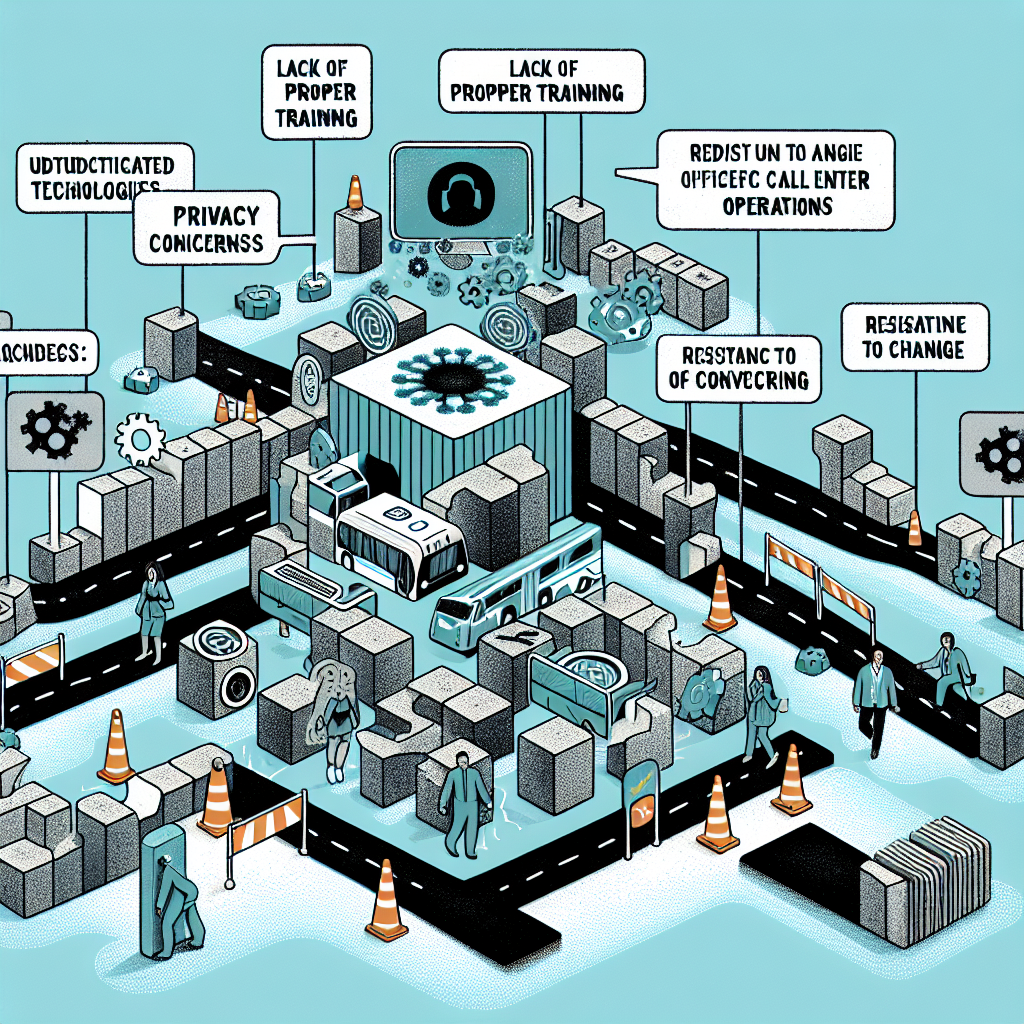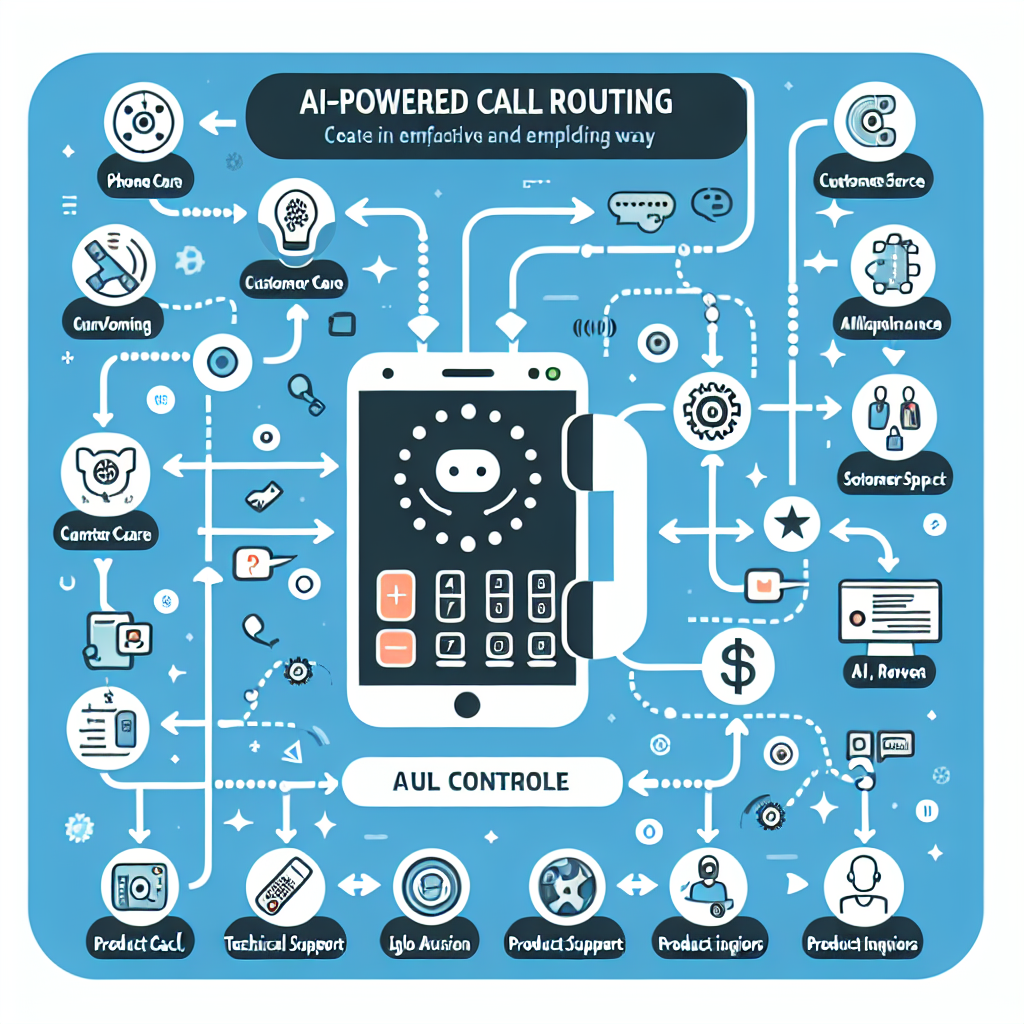
In the rapidly evolving landscape of call center operations, the integration of cutting-edge technologies has become pivotal. Especially with the advent of the hybrid model of remote and in-office work, managing call routing efficiently and effectively is more important than ever before. Decisively, it is Artificial Intelligence (AI) that brings significant advancements in establishing a robust call routing system tailored for this new work setup.

Above all, AI technology, when implemented smartly, adapts call management systems to suit both remote and in-office environments. By comprehending and adapting to the agent's availability and skillset, AI can perfectively direct incoming calls to the most suitable agent, irrespective of their location. This precision routing not only enhances customer satisfaction but also drastically improves the productivity and work-life balance of agents.
Furthermore, advanced algorithms within AI-driven call routing systems can analyze various factors such as the call backlog, call type, and specific agent performance records. This enables more informed, data-driven decision making. So, while a human supervisor may struggle to equally distribute calls or inadvertently favor certain agents, an AI-driven system operates with objectivity, ensuring a fair, balanced, and efficient distribution of work.
To conclude, as companies embrace hybrid working models, AI provides an indispensable tool in managing the complex chessboard of call routing. Ensuring calls are directed quickly and accurately to the best-equipped agent is no small task, but with AI's help, it becomes a seamless operation, delivering benefits to all involved.
In the rapidly evolving customer service landscape, Artificial Intelligence (AI) is playing an increasingly significant role. A crucial application of AI is in managing call routing for hybrid remote and in-office agents. There are three key features that make AI-based routing systems stand out from traditional call management solutions: dynamic routing, call queuing, and priority handling.
Dynamic Routing is the cornerstone of AI-based systems. Innovative algorithms analyze real-time data to match each customer with the best available agent. Important factors include agent skills, expertise, work hours, current load, and even past interactions with the customer. AI eliminates guesswork, resulting in more meaningful and satisfactorily resolved customer interactions. A recent blog post by Talkdesk explores the power of dynamic AI routing.
Next, we look at Call Queuing, a feature that significantly reduces customer abandonment rates during peak hours. Traditional systems treat calls on a first-come-first-served basis, leading to high abandonment rates. However, AI-systems intelligently manage call queues, predicting the caller's patience level based on historical data, and dynamically adjusting the queue. Five9's AI solution explores this concept in detail.
The last feature to highlight is Priority Handling. Traditional routing systems often treat all calls equally, but this approach may not cater to business nuances. Certain calls may require immediate attention, whether due to the customer's importance, the nature of the query, or any other parameter. AI-systems learn to recognize these high-priority calls and push them forward in the queue or direct them to the most qualified agents. Call Centre Helper's guide provides more insights into priority handling.
In summary, the use of AI in managing call routing is an absolute game-changer. With features like dynamic routing, call queuing, and priority handling, AI-based systems are set to revolutionize customer service, providing tailored experiences and superior efficiency.
As businesses strive to achieve efficiency and deliver optimal customer service, integrating AI in managing call routing for hybrid remote and in-office agents has become an inevitable strategy. However, the integration process is not without challenges. Some of the common issues include system compatibility, cost implications, data privacy concerns, and workforce acceptance.

System compatibility is a significant hurdle. Often, businesses struggle to align their existing infrastructure and software with the AI tools. Bridging this gap requires a detailed technical assessment and possibly, system integration.
Similarly, the high cost of AI tools can deter companies from adopting these systems. However, businesses can overcome this by conducting a cost-benefit analysis to ensure the benefits of implementing AI outweigh the expenses in the long-term. There are numerous cost-effective AI solutions readily available that provide high return on investment.
Another common obstacle is data privacy. As AI systems rely heavily on data, adhering to GDPR or other regulations is critical. Thus, businesses should opt for AI tools that prioritize data protection and privacy.
Finally, achieving workforce acceptance can be tricky. Employees may fear job loss or find the new system complex. To overcome this hurdle, an effective strategy is to provide training to the employees and explain how integrating AI can make their jobs easier and efficient, rather than displacing them.
In conclusion, while the path to integrating AI into call routing management can be challenging, the solutions are readily attainable. All it requires is a systematic approach, smart planning, and an emphasis on conciliation between human workforce and technological advancement.
In modern day business operations, AI call routing has become an indispensable part of managing hybrid remote and in-office agents. Several organizations have adopted this groundbreaking technology and the results, as reported in various case studies, have been phenomenal.
A key case in point is that of a UK-based telecommunications giant, ChatComm. The company deployed AI for routing customer calls to the right agent, irrespective of whether they were remote or in the office. According to their internal reports shared with ZDNet, ChatComm saw a 35% reduction in call handling times, and an impressive 20% boost in customer satisfaction rates.
Turning our attention stateside, Locust Tech, a midsize software firm, integrated AI-powered call routing as part of their customer service approach. They sought to equally distribute workload between in-office and remote agents. Results shared in a TechRadar feature demonstrate an even distribution of calls between the two groups of agents and, remarkably, a 50% decrease in wait times.
Positive feedback also comes from the agents themselves. Remote employees of both ChatComm and Locust Tech have reported feeling "more connected" to in-office employees and that they experience "less workplace stress" owing to the rational distribution of customer calls. In-office agents echo their remote counterparts, explaining that AI call routing boosts "team collaboration" and makes workloads "more manageable".
These case studies illuminate the vast potential of AI in managing call routing for hybrid remote and in-office agents. Such real-world applications and testimonials underline the importance of integrating such innovative solutions into businesses today, regardless of their size.
As we navigate the future of work with hybrid models becoming predominant, technology advancements play a crucial role in ensuring seamless transition. One such magnificent stride is the use of Artificial Intelligence (AI) in managing call routing for both remote and in-office agents.

AI and machine-learning algorithms have been progressively used in call centres since the beginning of the digital era. However, their application in call management is witnessing a new wave of trends. AI-powered call routing utilizes data from agents’ past performances and customer interactions to maximize productivity and efficiency.
In the future, we anticipate even more advanced uses of AI in call management. Predictive predictive routing, a step forward from the traditional skill-based routing, is predicted to grow. This AI-driven strategy uses data analytics to predict the outcome of interactions based on various factors such as caller intent, agent skills, and estimated wait times to route calls to the optimal agent. As a result, it improves first call resolution rates, decreases handling time, and enhances customer satisfaction.
Another exciting trend is the integration of AI with Natural Language Processing (NLP) to understand customer sentiment and intent better. NLP technology can analyze voice-based customer interactions, identify keywords, and use this data to route calls effectively. This provides unprecedented data-driven insights, which could help equip agents better before even picking up the call.
The use of AI in remotely monitoring and managing agent performance is also expected to rise. Both in-house and remote employees can benefit from real-time feedback and coaching, improving the overall quality of customer service.
Thus, with the advent of emerging AI technologies in call management, the future of hybrid work models seems more structured, leading to improved productivity and customer satisfaction. We can confidently emphasize that the role of AI in managing call routing for hybrid remote and in-office agents is bound to become more indispensable in the forthcoming years.
Start your free trial for My AI Front Desk today, it takes minutes to setup!








